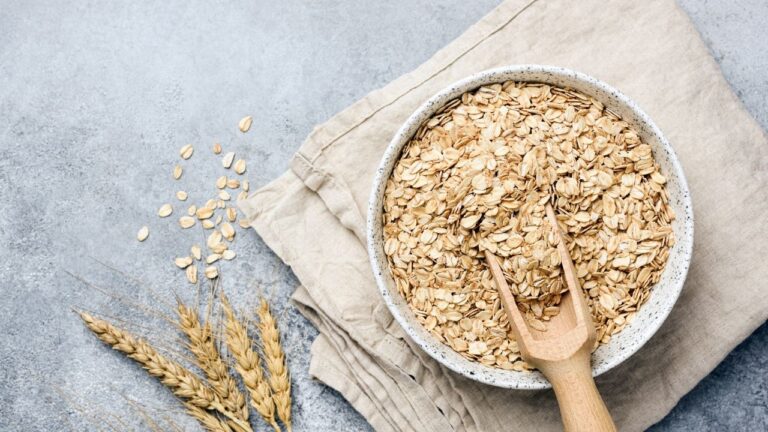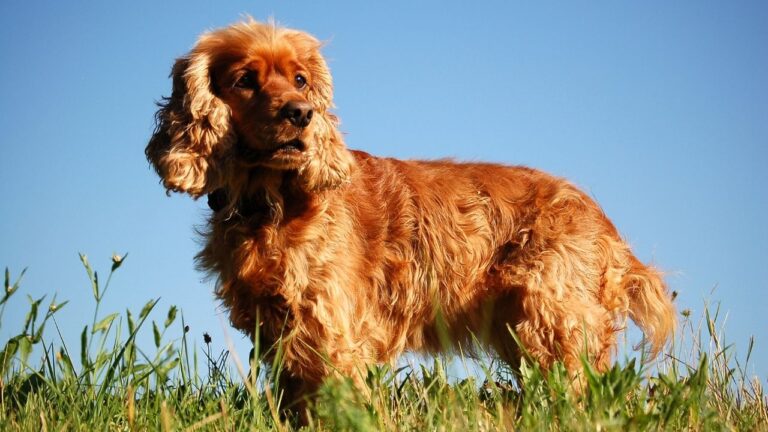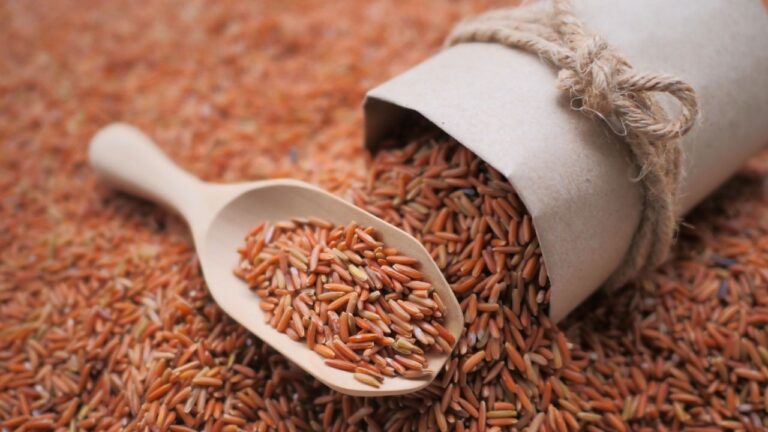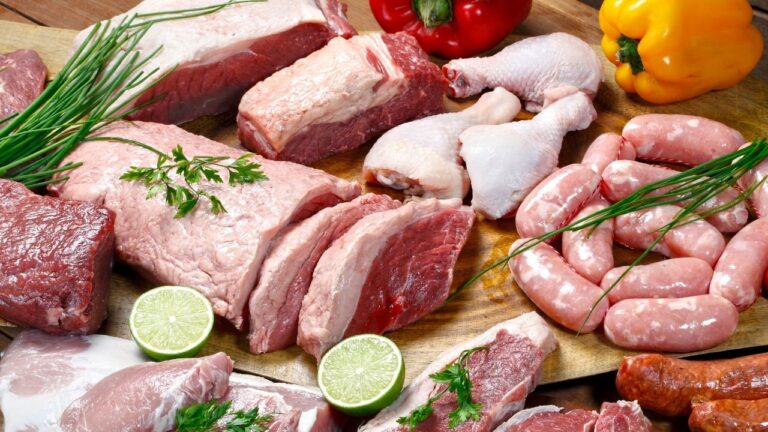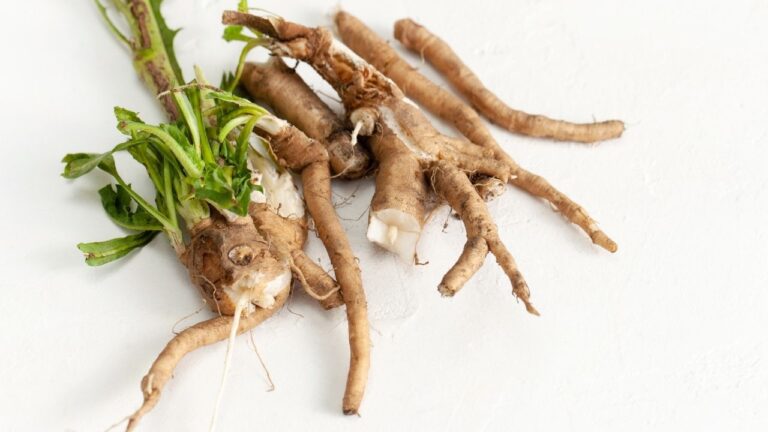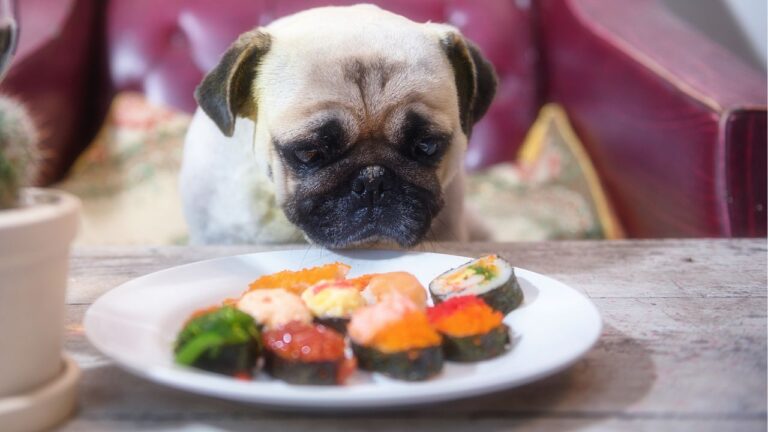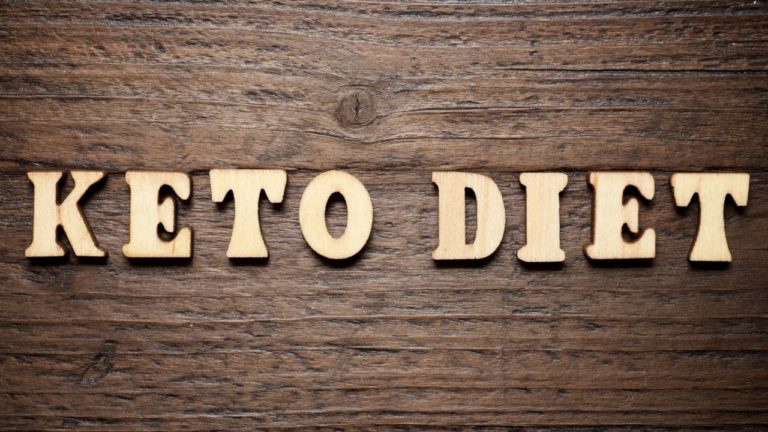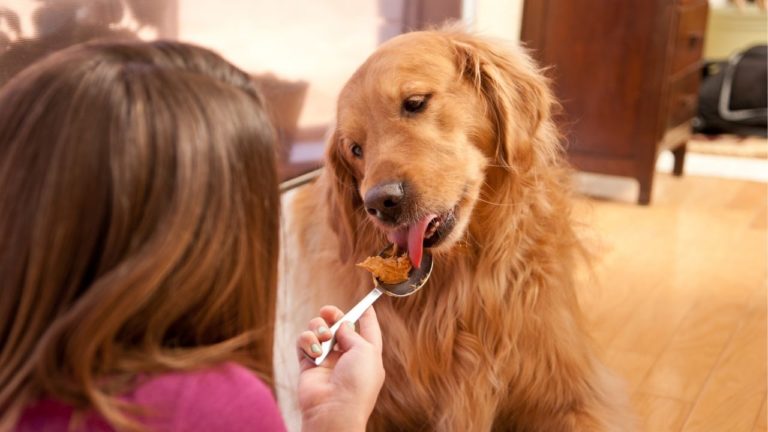Is Quinoa Good for Dogs with Cancer?
Quinoa's a popular grain. Could we use quinoa instead of steel-cut oats or brown rice as cancer-fighting complex carbohydrates in the dog cancer diet?
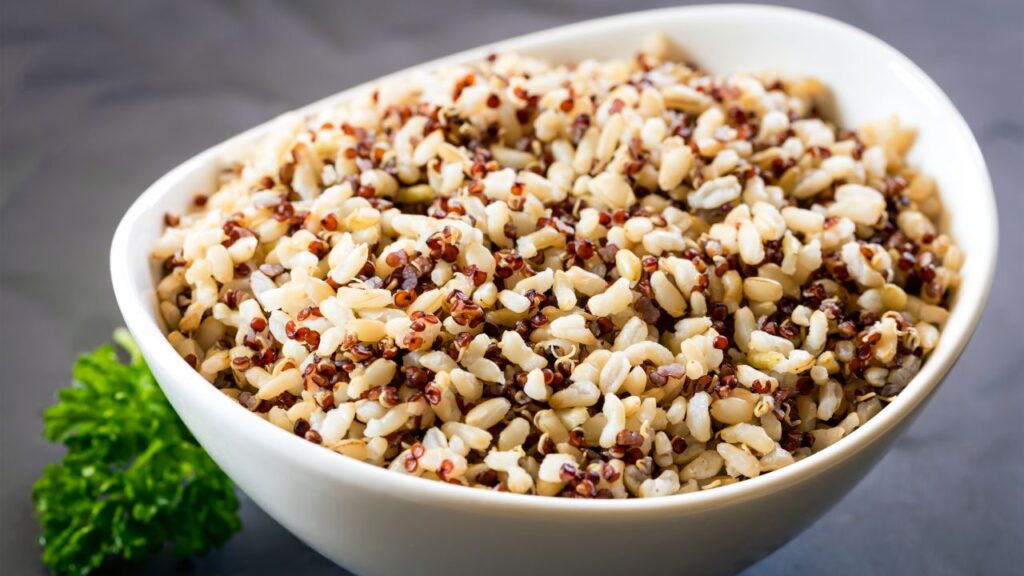
Read Time: 9 minutes
This ancient food has been making headlines for a few years now for its health benefits, so naturally, dog lovers are wondering: Is quinoa safe for dogs with cancer? Could we use quinoa instead of steel-cut oats or brown rice as cancer-fighting complex carbohydrates in the dog cancer diet?
Let’s find out.
Quinoa: What’s for Dinner For Incans
The ancient Incans first domesticated quinoa for human use about 3000-4000 years ago in the Lake Titicaca basin in Peru. For up to 7200 years, quinoa fed cattle.
The Incans called quinoa “the mother of all grains,” perhaps because there are so many kinds of quinoa: over 120 varieties.
When a food has been in use for that long, there is a reason. There must be something good going on here, or humans wouldn’t keep cultivating and eating it.
Quinoa: Carb-o-licious and High in Protein
Cooked quinoa is about 21% carbohydrates, 4% protein, and 2% fat. That’s a high protein profile for most grains, but in the end, quinoa is mostly carbs.
If a low carbohydrate diet helps combat dog cancer, you may wonder why anyone would ever use quinoa as part of what I call a Full Spectrum Cancer Care plan.
As always, the carb count alone doesn’t tell the whole story.
Reminder: Why Low-Carbohydrate Diets are Good for Dogs with Cancer
You are correct to assert that low-carb diets are important for dogs with cancer. I’ve been advocating this approach for over a decade now, but it’s finally getting real attention in the mainstream.
For example, according to the journal Nutrition and Metabolism:
“Over the last years, evidence has accumulated suggesting that by systematically reducing the amount of dietary carbohydrates (CHOs) one could suppress, or at least delay, the emergence of cancer, and that proliferation of already existing tumor cells could be slowed down.”
That’s a lot of words, but basically, they are saying that when you reduce dietary carbohydrates from ALL sources, you could prevent cancer. And if you are already dealing with cancer, existing tumor cells could be slowed down.
Cancer Cells Love Carbs
I recommend restricting carbohydrates in general, especially when a dog has cancer. Why?
It’s a fact: most cancer cells prefer sugars and carbohydrates as their main fuel source. This has been known since the 1930s, when the Nobel Prize went to Otto Warburg for this discovery.
So Why Is There No Official Medical Cancer Diet?
Human physicians and veterinarians have diets for diabetes, kidney disease, heart disease, allergies, and many other conditions. But for some reason, the role of diet in cancer has been almost totally ignored.
I have no idea why. Here are just a few carbohydrate facts that we accept as scientists:
- Chronic high carbohydrate diets kick up insulin levels and also something called insulin-like growth factor. Insulin and insulin-like growth factor are both directly tumor-promoting.
- Cancer makes the body resistant to the normal effects of insulin. Carbs are not used normally by normal body cells, leaving more carbs for cancer cells. Cancer changes the body so that cancer cells are fed, and normal body cells are starved.
- When bodies burn fat for fuel (instead of burning carbohydrates), little molecules called ketones are released. Those on a low-carb diet tend to burn fat, putting them into a ” ketosis state.” It just so happens that cancer cells in test tubes and petri dishes seem to be very unhappy in the presence of ketones.
So Is Quinoa Safe for Dogs with Cancer??
So, what’s the deal? Just because animals and humans have eaten quinoa for thousands of years, is that a good reason to use it in a dog cancer diet when we are aiming for carbohydrate restriction in general?
Could it be used as a substitute for the brown rice and oatmeal recommended in The Dog Cancer Survival Guide?
Let’s look at those two grains to remind you about why I include them in the first place.
Dog Cancer Diet Guidelines re: Carbohydrates
I include steel-cut oats and brown rice in my dog cancer diet guidelines because they are complex carbohydrates that break down slowly in the blood and don’t spike blood sugar. More importantly, I include them for their amazing anti-cancer benefits. The polysaccharides in brown rice and oats have been shown to fight cancer.
Remember, every food in the diet is there to nourish the body AND fight cancer. So, both of those things need to be present in quinoa, too, to include it as a carb source in the diet.
I know some readers will wonder why we should even consider carbs, given the way cancer works, as described above.
The reason is it’s not as simple as “cancer loves sugar, so do not feed carbs.” No matter how much we want to simplify cancer, it will never be a simple disease to manage.
It’s not as simple as “cancer loves sugar so do not feed carbs.”
Why Small Amounts of Some Carbs May be Helpful for Dogs with Cancer
Cancer physiology is complicated, and we must always consider the big picture. We cannot look at one fact and let it guide all of our decisions.
Looking for “one single cause” is one of the reasons we don’t yet have a cure for cancer!
The fact is, most dogs need energy to feel good, and complex carbs can help. Some dogs do well on a totally zero-carb diet, anecdotally speaking, but in my experience and the experience of many readers, a no-carb diet is hard for many dogs to handle.
That’s why my dog cancer diet recommendations feature:
- Small amounts of complex carbs (not the very high amount found in commercial dog foods)
- Carbs that actively fight cancer.
- Carbs that feed the good bacteria needed for a healthy gut (see below).
In short, carbs from oatmeal and brown rice do things for your dog’s body that outweigh their carb content. The diet:
- Starves cancer cells by reducing available carbs.
- Reduces insulin resistance.
- Reduces obesity, a cancer-promoting state.
- Reduces inflammation.
- Provide some beneficial ketones.
You don’t need a zero-carb diet to get these effects. All of these also happen in a carbohydrate-restricted diet.
All these benefits happen in a carbohydrate-restricted diet. You do not need a zero-carb diet to get good effects.
Quinoa: Safe for Dogs with Cancer
Overall, generally, I like quinoa for dogs, even though it is a pretty new food for them. But like anything else, we have to be smart in how we use it.
Here are the pros:
- Quinoa may reduce inflammation when eaten for a long period.
- Quinoa may reduce obesity.
- Quinoa is high in protein.
- Quinoa is an excellent prebiotic that helps the gut.
- Quinoa is usually glyphosate-free!
- Quinoa rarely triggers allergies in dogs, since it is such a new food.
There are a few precautions, too, so let’s look at the pros and cons in more depth to decide whether you should include quinoa in your dog’s diet.
Quinoa and Inflammation
The main reason I like quinoa for dogs with cancer is because, in humans, quinoa has been shown to reduce microscopic inflammation if consumed over long periods of time.
In fact, eating quinoa was shown at Harvard to reduce the odds of premature death cancer and other chronic diseases (in people) by 17%. That’s pretty good. Why?
There is a well-documented link between low-grade inflammation in the body and cancer development, so anything we do to reduce inflammation in the body could be useful.
Keep in mind that the subject of inflammation is complicated. Readers are used to thinking about inflammation as an acute reaction to injury. Bump your head? That “knot” is the swelling associated with inflammation. Sprain your ankle? It gets red, swollen, and sore.
Those are all examples of acute inflammation or high-grade inflammation.
That’s not the kind of inflammation we worry about regarding cancer. We worry about low-grade, chronic, microscopic inflammation. The kind you don’t see. Early on, these invisible, microscopic changes can help cancer take root and thrive.
And after cancer is established, low-grade inflammation helps it continue its deadly business. That’s why reducing inflammation becomes a very important part of treating cancer.
Drugs like prednisone and piroxicam are used in chemotherapy protocols for dogs primarily for their anti-inflammatory effect.
I included curcumin and luteolin in the Apocaps CX formula in part for their synergistic anti-inflammatory effects.
Certain vegetables in the Dog Cancer Diet are included for their anti-inflammatory effects.
All of these strategies, one way or another, reduce chronic inflammation.
Since quinoa has been shown to reduce inflammation, too, it could be another tool in our arsenal.
Quinoa and Obesity
Quinoa is also neat because it tends to reduce obesity, at least in people. With about half the dogs in this country being overweight or obese, and with obesity increasing cancer risk and progression, this may be a good effect.
Note: dogs with advanced cancers often don’t want to eat at all. They also often have weight loss problems (cancer cachexia). Quinoa has a lot less calories relative to, say, oatmeal, so if your dog is losing weight or not eating, I do not recommend quinoa. It’s not going to help as much as a more high-calorie complex carbohydrate (oatmeal or brown rice).
But if your dog is chubby already, quinoa might be a good choice for his or her diet. It could help to reduce that extra weight that cancer loves.
Quinoa and Protein
Another interesting thing about quinoa is that it has all the amino acids found in meat. That’s pretty great.
That said, quinoa is not a replacement for meat, particularly for dogs. The protein content is way, way lower. But it’s still nice to have a full complement of amino acids in the grain.
Note: I am only talking about white quinoa, which is higher in calories and has more fat than red quinoa.
Quinoa and Pre/Probiotics
I am really interested in quinoa for this feature: it may promote the growth of healthy intestinal bacteria.
Intestinal bacteria, also known as the microbiome, is a huge area of research these days. Briefly, an overpopulation of unhealthy bacteria favors cancer cell growth in a variety of ways. Good bacteria, also known as probiotics, control unhealthy bacteria.
So, for both general health and cancer-fighting, a healthy population of probiotics in the gut is beneficial, as discussed in The Dog Cancer Survival Guide.
Here’s the thing: probiotic supplements have a short-lived effect if the gut doesn’t contain the right kinds of carbs to feed them once they arrive. Probiotics could be gone within the week unless carbs that feed healthy bacteria, also known as “prebiotics,” are present.
Avoiding Dysbiosis with Healthy Carbs
For this reason, I include certain carbs that feed healthy gut bacteria in the dog cancer diet. We need to feed healthy intestinal bacteria. If we don’t, our dogs are prone to dysbiosis, an overgrowth of unhealthy intestinal bacteria.
Dysbiosis leads to inflammation of the entire body, which promotes cancer development and progression.
Dysbiosis also encourages “leaky gut,” which is when the intestines become sort of “loosely woven” and allow all kind of nasty things to pass into the blood. The larger “holes” in the intestines don’t just let nutritious foods through but also foreign molecules like carcinogens. Gluten, found in wheat and other grains, increases this leakiness, which is a good reason to avoid it in general.
Feed healthy bacteria with good grains included in the dog cancer diet: oatmeal, brown rice, and quinoa, if it’s appropriate for your dog. Other ways include supplementing with modified citrus pectin, or adding asparagus, chickory root, or yacon root, all cooked at low temperatures.
Quinoa and Glyphosate
Another good thing about quinoa: an absence of glyphosate. This is that nasty stuff found in the weed killer, Roundup, commonly used in large-scale farming. We farm quinoa on a small scale (at this point), so this isn’t an issue.
Glyphosate ends up in grains and therefore in both dog and human food. The evidence we have that glyphosate does bad things is piling up rapidly, and avoiding it is a good idea.
Quinoa and Food Allergies
Dogs with food allergies can often eat quinoa because it’s a relatively new food for dogs, and, therefore less likely to trigger an allergic response.
Okay, quinoa has positives. Let’s look the negatives so you can make an informed decision about whether to include it in your dog’s diet.
Precautions About Quinoa
Quinoa can lead to weight loss, so as I mentioned above, I don’t recommend feeding quinoa to dogs in good condition or actively struggling with cancer cachexia. Don’t choose quinoa if your dog doesn’t want to eat. But if your dog is obese or overweight, it might be helpful.
Another thing that caught my attention is that at least some of the benefits quinoa offers come from saponins. These little chemicals make quinoa taste a little bitter, and they are responsible in part for the grain’s anti-inflammatory effects. Mainly found on the grain’s surface, cooking washes the saponins off. This makes the quinoa taste better, but it also reduces the anti-inflammatory effect.
But don’t feed your dog raw quinoa for this reason! Even with reduced saponins, your dog will still get the beneficial metabolic, prebiotic, and hypoallergenic effects.
We should also pay attention to the fact that quinoa can have high levels of a type of salt called oxalate. Some dogs have problems with urinary stones made of oxalate, and reducing oxalate in their diet is important. If your dog has oxalate kidney stones, I would certainly avoid quinoa.
Which Dogs Could Benefit from Quinoa?
I think quinoa can be used instead of oatmeal or brown rice in the dog cancer diet (in the amounts below). It’s a relatively expensive grain, and you need more of it than you do those others, but it could be desirable for you if your dog is overweight or obese, free of oxalate kidney stones, or has a lot of food allergies.
I don’t recommend it for dogs who have oxalate kidney stones and/or are struggling with weight loss.
How to use Quinoa in the Dog Cancer Diet
Keep in mind that home cooking can lead to improperly formulated diets that don’t have the right nutritional composition. The dog cancer diet that I suggest in the book (also found in the ebook The Dog Cancer Diet) keeps this in mind and is balanced so that your dog is generally getting a good nutritional balance of protein, fat, carbs, and general nutrition.
But quinoa has a different profile than oatmeal and brown rice, so you can’t just do a one-to-one substitution and get the same balance.
If you would like to use quinoa as your carbohydrate source in my diet, use white quinoa and then take the amount of oatmeal in the Dog Cancer Diet recipe and multiply it 3.5 times. In other words, if you are using 2 cups of oatmeal/brown rice for your dog’s recipe, you will need to use 7 cups of quinoa to get the right amount.
There are also some nice recipes that you can get using quinoa at BalanceIt.com.
All my best,
Dr D
Editorial Note: This post was originally published on a retired blog about dog cancer.
Klement RJ, Kämmerer U. Is there a role for carbohydrate restriction in the treatment and prevention of cancer?. Nutr Metab (Lond). 2011;8:75. Published 2011 Oct 26. doi:10.1186/1743-7075-8-75
Anti-inflammatory activity of saponins from quinoa (Chenopodium quinoa Willd.) seeds in lipopolysaccharide-stimulated RAW 264.7 macrophages cells. Yao Y, Yang X, Shi Z, Ren G. J Food Sci. 2014 May;79(5):H1018-23. doi: 10.1111/1750-3841.12425. Epub 2014 Apr 8. PMID: 24712559
Daily bowl of quinoa could save your life, says Harvard University, The Telegraph, By Sarah Knapton, Science Editor Mar 24, 2015
Simnadis, T.G., Tapsell, L.C. & Beck, E.J. Physiological Effects Associated with Quinoa Consumption and Implications for Research Involving Humans: a Review Plant Foods Hum Nutr (2015) 70: 238. https://doi.org/10.1007/s11130-015-0506-5
Liu W, Zhang Y, Qiu B, Fan S, Ding H, Liu Z. Quinoa whole grain diet compromises the changes of gut microbiota and colonic colitis induced by dextran Sulfate sodium in C57BL/6 mice. Sci Rep. 2018;8(1):14916. Published 2018 Oct 8. doi:10.1038/s41598-018-33092-9
Food allergy in dogs and cats: a review. Verlinden A, Hesta M, Millet S, Janssens GP. Crit Rev Food Sci Nutr. 2006;46(3):259-73. Review. PMID: 16527756
Otto Warburg on Wikipedia https://en.wikipedia.org/wiki/Otto_Heinrich_Warburg
Glyphosate listing on the National Pesticide Information Center http://npic.orst.edu/factsheets/glyphogen.html
Calcium Oxalate Bladder Stones in Dogs https://vcahospitals.com/know-your-pet/calcium-oxalate-bladder-stones-in-dogs
Quinoa-Oatmeal calculations https://www.foodsforbetterhealth.com/quinoa-vs-oatmeal-comparison-nutrition-benefits-32668
Recipe Generator at BalanceIt.com https://secure.balanceit.com/recipegenerator_ver4/index.php?rotator=EZ
Demian Dressler, DVM
Topics
Did You Find This Helpful? Share It with Your Pack!
Use the buttons to share what you learned on social media, download a PDF, print this out, or email it to your veterinarian.


